From a centuries-old pear tree marking the remnants of a castle in the Czech Republic, to an urban perimeter of abandoned ammunitions dumps in Spain, to a tiny balcony in cramped New Delhi—places that people care about dot the globe. Stewards, often driven by place attachments, meanings, and memories, defy the forces quietly erasing these places—time, indifference, conflict, population growth. They act to preserve their places’ historical and biological heritage, demonstrating how important these places are to them and to the collective identity of their community.
Sharing stewards’ stories can inspire and offer insights into the actions people take to restore urban places. But how can one capture and share these stories? Given that Massive Open Online Courses (MOOCs) are often seen as a means of delivering knowledge from universities to the masses, a MOOC might seem an unlikely place to go looking for insights into how citizen stewards describe their work. But in our Reclaiming Broken Places: Introduction to Civic Ecology MOOC, we invited students to tell their own tales of stewardship through the lens of ten “civic ecology hypotheses,” which touch on biophilia, topophilia, ecosystem services, human-nature contact, networked governance, and resilience, among others. The MOOC students used the multi-media blogging platform Storify for their work; we have compiled a selection of their stories into an eBook coming out this spring.
Reading the stories provides a glimpse into stewardship practice around the world, a chance to understand the stewards’ special places and their connections to them. Here we share four stories: The Caved-in Castle from a village in the Czech Republic, the Waste Grounds surrounding Madrid, the Sparrow Balconies of India, and the Flowering Yurino Garden in Japan.
The Caved-in Castle, Holešov, Czech Republic
The Caved-in Castle embodies a piece of local history that has passed into legend. According to civic ecology steward (and MOOC student) Jana Karasová, all that remains of the castle today is a mound on the landscape. But the grounds—overgrown and abandoned—are being reclaimed, along with lingering memories of the castle’s heyday and a centuries-old wild pear tree. Boy scouts in the village of Holešov have adopted this area as their own, leading efforts to remove invasive species and keep the grass mowed, thus making the site accessible to town residents and helping to preserve local flora and fauna.
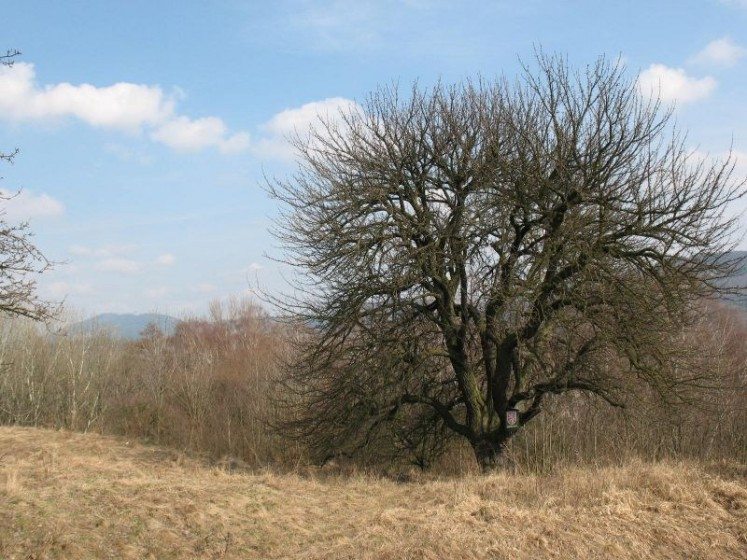
The villagers take pride in the site’s pear tree, which is thought to be over 300 years old and has been featured in historical accounts and legends. The local library and historical society joined the restoration effort, unearthing references to the castle and the tree, and government agencies and scientists are starting to help out, spurred by their interest in local biodiversity and the genetics of the wild pear. In addition to this small “governance network,” the community’s collective efforts have restored “social-ecological memories” of the castle and pear tree, created cultural ecosystem services related to the restoration activities themselves, and provided opportunities for learning about local plants and history.
Waste Grounds, Madrid
In 1912, nine enclosures were constructed around the city of Madrid to contain munitions dumps. Over time, these areas became the city’s “waste grounds”—piles of rubble dumped on the terrain and forgotten for decades. Recently, Professor María Auxiliadora Gálvez Pérez and colleagues in the San Pablo University Department of Architecture noticed how grasses, flowers, and even some shrubs and trees were beginning to reclaim the waste grounds. They brought students out to research and restore the area.
At the Archiprix urban design workshop, the students and faculty shared their vision of a middle-out urbanism that transgresses top-down and bottom-up approaches, and of imaginary pragmatics, which produces powerful images proposing imaginary solutions based on hard data. With their vision of the waste grounds transformed into community spaces and a biodiversity reserve, the students are trying to enlist the city government in protecting the sites, thus allowing the students to continue learning from and reclaiming the wasteland. They have compiled an “Atlas of the Waste Grounds” to document their projects, the wildlife, the social context, and the services provided by these neglected parcels of land.
Sparrow Balconies, New Delhi
Amidst the clamor of residential streets in congested New Delhi, sparrows sing and vines and trees burst out over the street below. Marisha Sharma is a participant in the national Greening of Balconies project, which is supported and encouraged by government initiatives and NGOs. In addition to planting small trees, shrubs, and vegetables, and composting food wastes, residents install bird houses to attract their newly-designated state bird, the House Sparrow. As neighbors see each other’s greened balconies, the practice spreads rapidly.
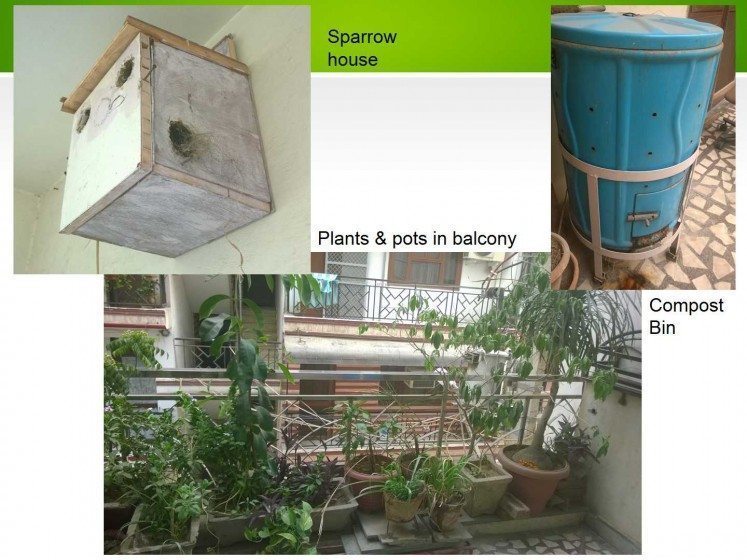
In comments that provoke thoughts about nature “doses” in dense cities, Sharma’s father talked about their apartment’s balcony: “Every morning I sit in the balcony full of plants, sipping tea with my wife. I keep my camera handy and capture the sparrows busy in their nest building and chick rearing activities. That half hour spent every morning with the sparrows empties the mind of all other material thoughts and worries. Thus, I start my day with full enthusiasm.” Her mother added: “Due to greenery, lots of birds visit my balcony, which gives me happiness. I also grow flowers which I use during my prayers in the temple, which gives me mental peace.”
Flowering Yurino Garden, Nishinomiya
We were particularly moved by the story of resilience and restoration told by the Flowering Yurino Garden through the eyes of Momoka Tamura. Twenty years ago, Nishinomiya, Japan suffered a devastating earthquake. Massive landslides killed 34 residents and destroyed dozens of houses. As reconstruction began, the government covered the landslide with concrete to prevent future tragedies. But the drab, gray material felt wrong, especially in a place where so many had died. Senior residents began to plant flowers on the hillside. They created the Yurino Garden, planting not just flowers but pumpkins and watermelons as a memorial to the souls of the deceased.

Tourists come to see this place every spring, marveling at the signature display of pink flowers, and perhaps getting ideas about how to implement similar projects locally. High school students volunteer and residents enjoy concerts and other community events in the garden. Reflecting Keith Tidball’s work on post-disaster greening, this place of devastation and sorrow has become a beautiful memorial to life—a place for healing and learning.
* * * * *
Our ten civic ecology hypotheses (see below) are what we have imagined based on years of observing, studying, and participating in stewardship practices. Through their stories, the MOOC students contested and confirmed our hypotheses. For example, they challenged our notions about “broken places” being the only sites where civic ecology practices occur. Whereas a landslide after an earthquake in Japan is a classic post-disaster “broken place,” it’s harder to apply the term “broken place” to an abandoned field with a pear tree and a mound that was once a castle in a Czech village. We also found through our MOOC that some form of collaborative governance entailing community organizations, non-profits, and government agencies appears to be universal across civic ecology practices, and is also a means for expanding the impact of these small scale stewardship and restoration activities.
As MOOC students share the stories of their practices, they both inspire and offer insights into why and how people steward urban places, and the larger meanings of these stewardship actions. And similar to how students implementing design projects in the waste lands surrounding Madrid are turning “imaginaries” into something pragmatic, we as scholars continue to both imagine and ground truth our ideas through research and teaching. Finally, just as the Madrid waste land restoration projects are a form of “middle-out urbanism” that transgresses top-down and bottom-up approaches, our MOOC has occupied a middle ground where experts and practitioners share knowledge and experience.
These stories and 26 others generated by students in our Reclaiming Broken Places MOOC are available in a free eBook to be posted at www.civicecology.org this spring.
Kimberly Snyder and Marianne Krasny
Ithaca
* * *
Ten Civic Ecology Hypotheses (from Civic Ecology)
Emergence: Why do civic ecology practices happen?
1. Civic ecology practices emerge in broken places.
2. Because of their love for life and love for the places they have lost, civic ecology stewards defy, reclaim and re-create these broken places.
Bricolage: Piecing the practice together
3. In re-creating place, civic ecology practices re-create community.
4. Civic ecology stewards draw on social-ecological memories to re-create places and communities.
5. Civic ecology practices produce ecosystem services.
6. Civic ecology practices foster well-being.
7. Civic ecology practices provide opportunities for learning.
Zooming Out: A systems perspective
8. Civic ecology practices start out as local innovations and expand to encompass multiple partnerships.
9. Civic ecology practices are embedded in cycles of chaos and renewal, which in turn are nested in social-ecological systems.
Policy Makers: Understanding and enabling
10. Policy makers have a role to play in growing civic ecology practices.
about the writer
Marianne Krasny
Marianne Krasny is professor in the Department of Natural Resources and Director of the Civic Ecology Lab at Cornell University, and leader of EPA’s national environmental education training program (“EECapacity”).








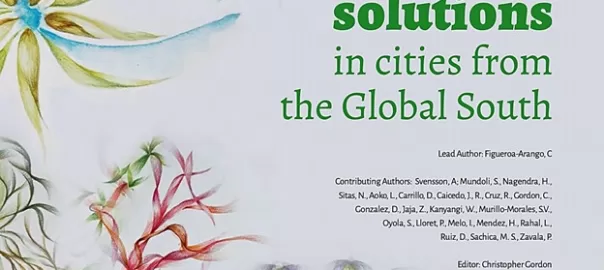
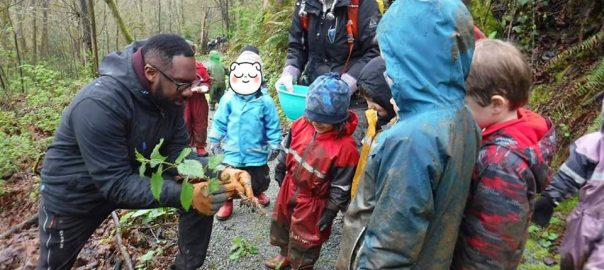
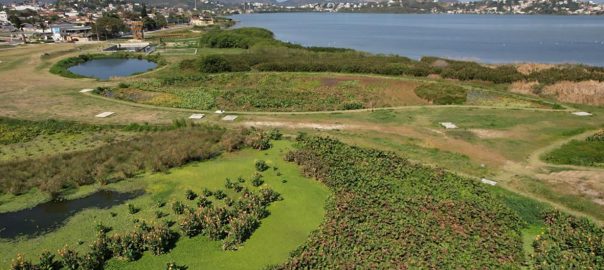
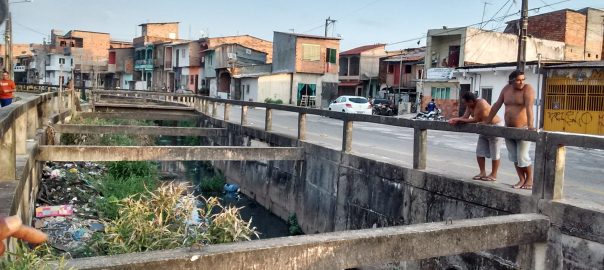
Yes, the course is being re-offered starting September 6. Here is the url for a description and registration. https://www.edx.org/course/reclaiming-broken-places-introduction-cornellx-envsci1500x-0#.VEJ-eBaFlom You can also take the course as a “self-directed” learner between now and September 6.
We also plan some pre-course social media and hands-on events this summer. See the Civic Ecology Lab Facebook site for announcements later this spring and summer. https://www.facebook.com/CivicEcologyLab/
I wonder if you have plans to offer this MOOC again?